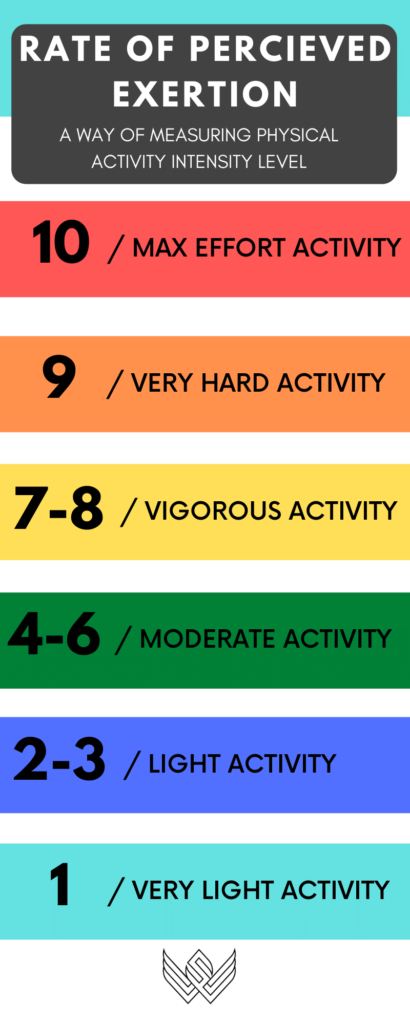As a coach to hundreds, I know that not everybody has access to a heart rate monitor or simply chooses not to wear one. For many reasons including affordability, clients need another way to measure and improve their workouts. In this article, you will learn how to improve your fitness level without an activity tracking device.
Rate of perceived exertion
Used widely in sports and exercise science, the rate of perceived exertion is a subjective measurement of a person’s exertion during activity. Using a 1 to 10 scale, the individual determines how hard they’re working and gives that effort a number. Because this measurement is subjective, it varies from individual to individual. For example, an Olympic athlete’s 8 on a scale of 1 to 10 is significantly higher than someone who only exercises intermittently.

How does each number on the scale feel?
When determining how to improve your fitness level without an activity tracking device, you must understand how each level feels inside. The Rate of Perceived Exertion is best described in the activity of walking.
- 0 is the number you would assign to sitting on the sofa and watching a movie.
- 1 is walking around the house, picking up dishes off the table, and accomplishing easy household chores.
- 2-3 is a slow-paced walk that you could continue for a long time with no labored breathing.
- 4-6 is a brisk walk or power walk that causes you to be breathy but still able to speak a full sentence.
- 7-8 is a jog or run that causes labored breathing but you can speak limited words.
- 9 is a full-out sprint and you can only speak one to two words.
- 10 is your max intensity that can be maintained for a very limited amount of time or reps.
How do I use RPE to improve my workout?
For your first week, simply assess your current exercise patterns. Define your personal baseline assigning an RPE number to each of your workouts. Once you have determined your baseline scale, you have the ability to increase your output either in intervals or for the duration of the exercise session. If you usually jog at a 7, spend 60 seconds in 8 or 9 then bring your exertion back to a 7. Intermittently increase your perceived level of exertion to improve your workout.
Keep in mind
Not every workout is equal. Your nutrition, hydration, sleep, and hormones can play a major factor in sports performance. So, cut yourself a break. If you are having a great day, get after it! If you are feeling sluggish, a walk at a level 2-3 could turn your energy around after thirty minutes. Pop in some earbuds, turn on your favorite jams, and get to sweating!
